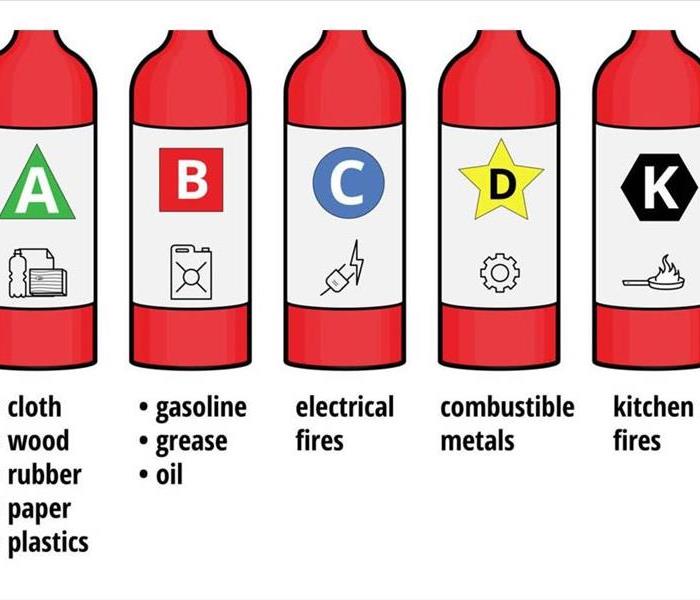How to Properly Handle a Fire Extinguisher
12/11/2019 (Permalink)
Using a fire extinguisher
Step 1: pull the fire alarm and call the fire department, if applicable
Step 2: Identify an evacuation path before approaching the fire. Never allow fire, heat, or smoke to come between you and the evacuation path.
Step 3: Use the extinguisher using the P.A.S.S. technique
P.A.S.S. Technique:
- Pull the pin – this breaks the tamper seal
- Aim low- point the nozzle or hose at the base of the fire. DO NOT touch the nozzle or discharge horn! This can damage your skin
- Squeeze – squeeze the handle to release the extinguishing agent.
- Sweep – from side to side at the base of the fire until it is extinguished. If it re-ignites, repeat steps 2-4
Step 4: Back away from the fire immediately in case of re-ignition.
Step 5: Evacuate IMMEDIATELY if the fire is not out and the extinguisher is empty.
If you have any doubts about your ability to fight a fire evacuate IMMEDIATELY
https://www.osha.gov/SLTC/etools/evacuation/portable_use.html
Always be aware of any fire extinguisher recalls!
There are 5 primary classes of fire extinguishers, made specifically for different fires. To see each type here
- Class A: This type of fire extinguisher is used with materials such as: cloth, wood, paper
- Found in homes and businesses
- Class B: This type of fire extinguisher is used for grease, gasoline, or paints.
- Found in homes and businesses.
- Class C: This type of extinguisher is used for electrical equipment such as tools or other equipment that is plugged in.
- Found in homes and businesses.
- Class D: This type of fire extinguisher is used for flammable metals
- Found in factories
- Class K: This type of extinguisher is used for vegetable oils, animal oils, and cooking fats.
- Found in restaurants, cafeterias, catering.
Sometimes extinguishers are multi-purpose and labeled as “A-B-C” meaning it covers Class A – Class C materials.
Always be sure nothing is ever in the way of a fire extinguisher. Also be sure the hoses, nozzles, and can are not dented or damages, and that they are clean!
For more info, click -> here





 24/7 Emergency Service
24/7 Emergency Service